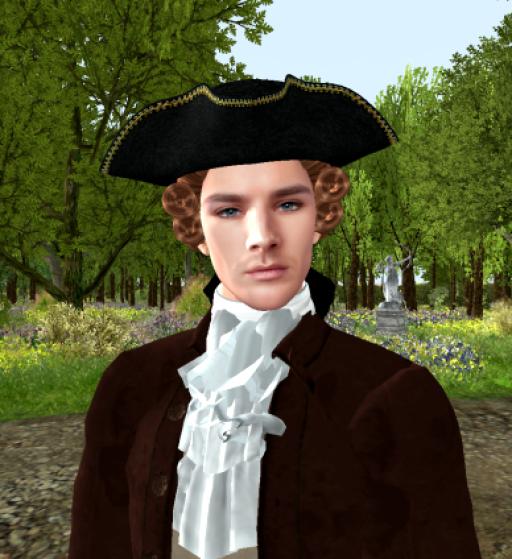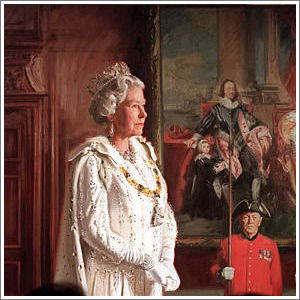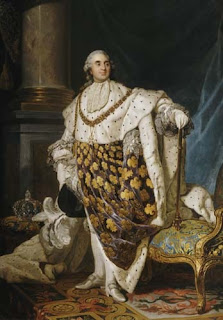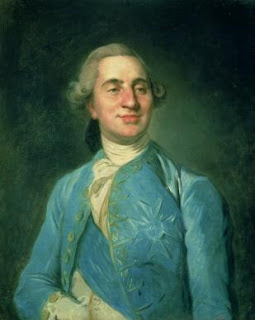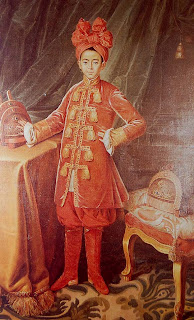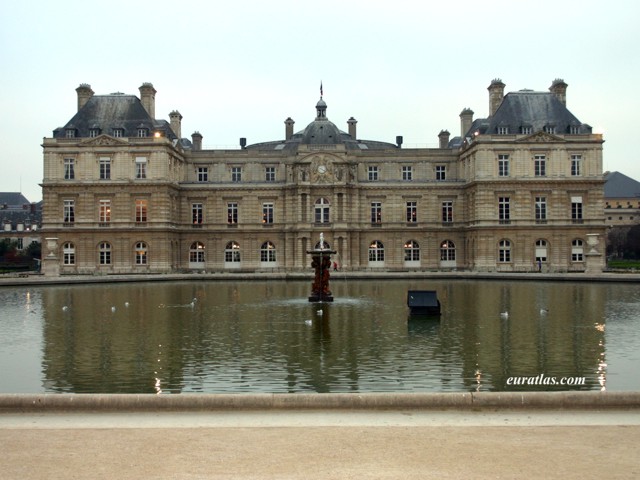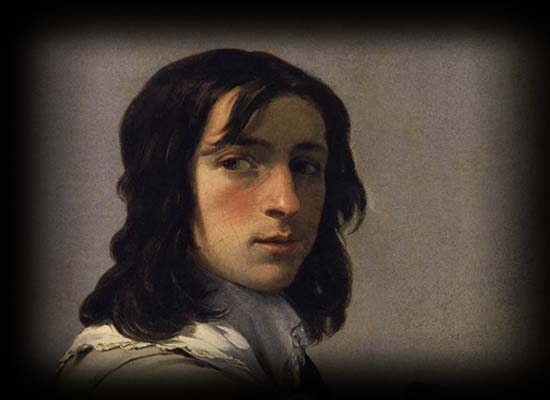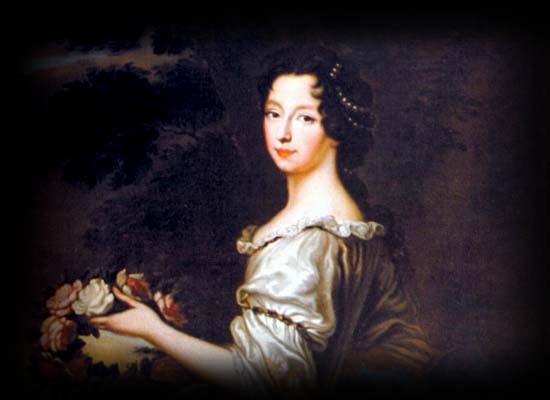I am a proud American (and a typical, hardspoken New Yorker). I have icons whotranscendsboarders, and cultures. One of those Icons, is her Royal Majesty, Elizabeth II, Queen of the United Kingdom of Great Britain. Today,February6th, 2012,celebratedher 60th year since sheascendedthe throne. I'm not here to write her bio, her history, her greatest moments, or her worst, but my simple reason why she is an Icon to me.She has no connection to my own country, but at the same time, she has a connection to me. I, like many of users of ning, I love and adorehistory, and partakes in all forms of historical RP. To me, sherepresents, a solid link to proud customs, and national pride, but is also a keeper oftraditionand values, which is extremely hard to do in a world where everything is questioned. I can't argue that I don't like the pomp either hehe, it keeps things interesting hehe. In hard times, she held her head up, and served her nation proudly. On a personal note, she representsstrength, in aconstantlychanging world. She carries on her, the values andtraditionsof the past, somewhichshe removed, and others she adapted to suit our present lives, and in this way she laid the foundations for the future. Her life, ways ,and family isconstantlycriticized, but they remain faithful (I'm nottakingsides of tax payers or the royal spending...not my country not my affairs :-P )), but no one cannot say she has failed her duty. To me, the monarchies ofEurope, from Spain to Sweden,are no longer a powerful force in the sense ofphysicalpower, but yet they arecommandingbeacons, who make their nations proud, by carrying ontraditions, value and pride. This was justpersonalmoment to reflect and add a little post on my thoughts, I mean no harm, no offence, no insult, or nothing like that. To sum it up here are some awesome pics!
This is possibly my favorite image for an unknown reason:
Again, I mean no insult, or offence or anything, just a thought I would like to share.
Delos.
While piling through the blogs I normally read, I came across this 'The Greatness of King Louis XVI' from the Mad Monarchist Blog.
The Greatness of King Louis XVI
Once again, on this day we remember the impious and treasonous regicide of the royal martyr His Most Christian Majesty King Louis XVI of France and Navarre, lastly King of the French. Much can and has been said about the spiritual greatness of this late sovereign. At a time when moral decay had taken its toll on France, and nowhere more so than the court it often seemed, King Louis XVI was a man of devout faith. He never took a mistress, never shirked his religious duties, genuinely preferred work to frivolous parties and truly saw his kingship as a sacred duty rather than an opportunity to have the best for himself. All of that is well established and should be well known. However, even those who praise King Louis XVI for his pious spirit often portray him as rather lacking in the more secular qualities most often required of kingship. At times he is contrasted with King Louis XIV who, while certainly far from being a pious man, was a more decisive leader who steered the ship of state with a firm hand, bringing glory to France and around whom almost all the affairs of Europe revolved. The exact opposite of Louis XVI we are to believe. Yet, while it is true that the two men were very different, it is certainly not true that King Louis XVI occupied himself only with other-worldly matters.
It is tragic any time a nation sets to destroying itself rather than accomplishing the great deeds possible if they worked together to channel all of that energy into the pursuit of some more lofty ambition. Although he had trepidations about some of it, there is ample reason to believe that had it not been for the outbreak of the Revolution, King Louis XVI might have gone down in history as one of the greatest Kings of France in secular as well as spiritual terms. In all the focus on the Revolution and his personal character, the great events and foreign policies of his reign are often overlooked. In the first place, he was no despot and from the very start favored giving the people a greater say in how their money was spent and how France was governed. However, even with all of the problems facing France, as a monarch, Louis XVI took a broader look at the past, present and future of France and wanted to see past losses made right and gains made for a greater future for his country. Of course, particularly after the drubbing France had taken in the recent conflicts with Great Britain, it was the British who would be the primary rival in his foreign policy. The King was not malicious or reckless by any means but he was determined to see British gains made at the expense of France reversed.
This was what ultimately led to the French intervention in the American Revolution (or more properly War for Independence). Louis XVI had deep reservations about helping any rebels in waging war against their sovereign yet he was persuaded to make an alliance with the fledgling United States by a combination of the urging of his advisors and his desire to see an end to the British domination of North America and, perhaps, a much greater French influence in the region. Although not often remembered, following the French and Indian War the French military had been reformed and greatly improved. The expeditionary force sent to North America fought extremely well and, along with the French navy, proved decisive in securing the independence of the United States by forcing Great Britain to give up on the war and come to terms with their former fellow subjects. The islands of Tobago and Grenada were taken from the British (Tobago being retained by France along with Senegal in the final settlement) but, to some extent, Louis XVI was undercut by his American allies who made a separate peace with Great Britain and effectively thwarted the greatest ambition King Louis had for the conflict which was the recovery of Canada. Had the war gone on there is every reason to believe that could have happened.
In the other great arena of colonial competition, Louis XVI also hoped to reverse previous losses and see the growing British dominance in India come to an end. He allied with the Maratha Empire and took the side of the Sultan of Mysore in the Second Anglo-Mysore War in the hope of breaking the dominance of the British East India Company, curtailing British influence in India and increasing French influence. France actually had a much larger sphere of influence in India, controlling large parts of the east coast and holding sway over the majority of the southern subcontinent. French troops and ships were active in the region but due to the distance involved the campaign was overtaken by events elsewhere and when the end of the American Revolution forced France to make a hasty peace with Britain the previous French support for the Indians was withdrawn. In the end Britain and the Indian forces made peace that restored the pre-war status quo in India. Again, had not the situation in American brought hostilities to an end, it is conceivable that France, working through local alliances, might have dethroned Britain from her place of prominence in India.
There was also the Far East to consider and, though not often remembered, it was under King Louis XVI that France first took a serious interest in Vietnam and, indirectly, helped bring about the victory of the last great imperial dynasty of Vietnamese history. Crown Prince Canh, heir of the future Emperor Gia Long, came to Versailles as a boy, converting to Christianity and symbolizing the alliance by which French support was promised to his father in exchange for favorable trade agreements and some minor territorial concessions. The previous regime in Vietnam had viciously persecuted Christians and King Louis was anxious to see a more humane dynasty put in place. A Catholic missionary had saved the life of Gia Long and he vowed that the rights of Christians would always be respected in his domain. However, by the time these great events were to take place in southeast Asia the forces of the Revolution were gaining strength and events rapidly approached a climax. King Louis was not able to play the decisive role he had wished to. Still, the Bishop of Adran acted on his own to help Emperor Gia Long take the throne and so things worked out. The only problems arose in the future when post-revolutionary French regimes tried to collect the payments promised to Louis XVI which the Vietnamese were reluctant to grant since it was the Bishop rather than the government in Paris which had actually helped them at the critical time.
King Louis also sponsored around-the-world voyages of exploration and the world (certainly North America) owes a great deal to Louis XIV for doing the same in his time. The point of all of this is that King Louis XVI was not, as he is so often portrayed, some sort of totally indecisive ditherer who fussed and prayed over one crisis after another. He had big plans for France, he had ambition, he wanted to see France recover her place of greatness in the world and had a few things gone differently there is no reason to believe that she could not have done so. There are those who will say that the Revolution proves that France was too weak to have accomplished anything in that period but this is clearly false. Look at what Napoleon was able to accomplish, once the Revolution was ended, only a few years later with the same country. Considering that the goals of Louis XVI were all about restoration and not conquering every nation in Europe, there is no reason to believe that he could not have been successful. King Louis XVI fully deserves his pious reputation as a martyr for the Kingdom of France but he should also be remembered as a potentially great King who could have done magnificent things for his country.
From The MadMonarchist.
http://madmonarchist.blogspot.com/2012/01/greatness-of-king-louis-xvi.html
Delos's Say
I know very little aboutauthenticityof these statements, but I have come across, the french intervention in the war ofIndependencemany time. What was stated, is whats generally accepted byscholarsacross the board. In my own research of the economic state of France during the 18th century, it was during the late part of the rule of Louis XV, and into Louis XVI that roads were better maintainedand expanded, and adevelopmentofindustries,slowly started to rise, based on the Industrial Revolution in Britain, which wasbeginning. Louis XVI, unlike his grandfather, took into account his people's views and accounts, issuing a royalcensus, which were still kept to this day, locked away away somewhere inParis.Whetherthecensuswas used or not, the sheereffortto do that, is show that he was more interested in his people a whole, rather than his court.Duringhis years as dauphin, he not only consumed food, dear Louis loved food, but books, upon books. When he came to the throne, scared as he was, he was a promising young monarch, who was full of ideas. His ideas I've read, were met by greatopposition, by his minsters, and by his court, who resisted even the slightest change, and we're obsessed with short term polices. Poor Louis, he wasindecisiveness, a lot, or little, perhaps it was thisopposition, and the pressure of his surroundings, that lead to his choices, and the damper down the initial ideas he once had.
I'll be researching more on the points listed by The Mad Monarchist, its aninterestingthing!
Richard Mique
INTENDANT OF THE BUILDINGS OF QUEENS MARIE LESCZINCZSKA AND MARIE-ANTOINETTE. INTENDANT GENERAL OF THE BUILDINGS OF LOUIS XVI (1728-1794)
Celebrated architect of Marie-Antoinette at Trianon, builder of the queens Hamlet and her English-style park, he also built fine neo-classical buildings in Versailles and Saint-Denis.
Born in Nancy, Mique began his career at Versailles as former chief architect to king Stanislas Leszczynski, duc de Lorraine and father of Marie Leszczynska. The queen took him into her service on the death of Stanislas in 1766. She commissioned to build a convent for girls in Versailles (the present Lyce Hoche). The architect built in its centre a splendid neo-classical chapel, an expression of his taste for the architecture of Palladio.
Marie-Antoinette then took him into her service in memory of their shared origins in Lorraine. He agreed to satisfy all her caprices. At Versailles, Mique began in 1775 the refurbishment of her inner apartment (cabinet de la Mridienne, library, inner study, billiards room, etc.) which went through several drafts as the queens tastes evolved. In 1782, he installed on the ground floor facing the marble courtyard a new and more discreet apartment to replace that of Mme Sophie, daughter of Louis XV. In the grand apartment, he designed the salon of the Nobles in the neo-classical style, not hesitating to mask the Louis XIV decor by a white ceiling with a cornice. He annexed to the apartment the salon of Peace which became the queens gaming room.
At Trianon, the domain of Marie-Antoinette par excellence, all her fantasies were given free rein: construction of a small theatre for the queen and her friends; a belvedere to rest in; a hamlet like that of the Prince de Cond at Chantilly but even larger, for her pastoral activities. Here Mique laid out an English-style garden on the advice of the painter Hubert Robert and the botanist Claude Richard. An artificial cave, a temple of Eros, an artificial lake and river enlivened this picturesque setting designed to express Rousseaus taste for nature.
Mique built on the hill of Saint-Cloud, when this estate was given by Louis XVI to the queen, a hospital for her charitable work. Rebuilt since then, only the chapel remains. The chapel of the Carmel of Saint-Denis for Mme Louise, the religious daughter of Louis XV, is another famous achievement of the architect. A zealous servitor of Marie-Antoinette, Mique was guillotined in Paris in 1794.
Taken from the Chateau de Versailles Website: http://en.chateauversailles.fr/history/versailles-during-the-centuries/the-palace-construction/richard-mique-1728-1794
List of his works:
- 1762: His first known design, for a kiosk in the gardens of Lunville .
- 1763-64 Two gates for the city of Nancy: the Porte Sainte-Catherine and the Porte Stanislas already show the neoclassical taste..
- 1765: Plans for the Sainte-Catherine barracks at Nancy .
- 1767-72: Buildings for an Ursuline convent in the town of Versailles for Maria Leszczyska . The convent now houses the Lyce Hoche. Mique's first two plans were rejected. The third executed design is similar to Jacques-Germain Soufflot 's Church of Sainte-Genevive in Paris .
- 1775-84: All the structures, including the bridge, that form the picturesque hamlet, the Hameau de la Reine in the garden of the Petit Trianon at Versailles. Mique carried it out in its naturalistic jardin anglo-chinois probably laid out in collaboration with the painter Hubert Robert; for inspiration, he was directed to visit the Anglo-Chinese park at Ermenonville (Higonnet 2002: 29).
- 1775-85: Church of the Carmelites Basilica of Saint-Denis , for the aunt of Louis XVI, Madame Louise , who had become a nun in the convent at Saint-Denis. Madame Louise dictated in detail the subjects she wanted for the sculptural decorations. The neoclassical building, with a Corinthian portico adapted from the Roman Maison Carre at Nmes , was consecrated 28 May 1784.
- 1778-79: The private theatre of Marie Antoinette at the Petit Trianon .
- 1778-81 : The octagonal Belvedere (1778-81) [5] , consecrated to the Seasons, the Pavillon du Rocher and the Temple de l'Amour in the newly-informal gardens of the Petit Trianon at Versailles. The Temple of Love, visible from the Queen's bedroom, was the setting for many ftes (Higonnet 2002: 28)
- 1780: Htel de l'Intendance, Versailles
- 1780s: Chteau de Bellevue , alterations in the interior (demolished) and alterations to the park, which required 42,000 new trees and a hermitage, for Mesdames , the daughters of Louis XV.
- 1782: Consolidation of the tower at the Cathedral of Orlans (1782-1787)
- 1785: Modifications at the Chteau de Saint-Cloud for Marie Antoinette (bombed by French artillery on 13 October 1870 and razed in 1891)
- 1785: Boudoir for Marie Antoinette at the Petit Trianon .
Some Pics :
Enjoy!
Marie Antoinette and her Children: The queens adopted family
From the day she arrived at Versailles at the age of only fourteen, one question loomed larger in the life of Marie Antoinette than any other. Versailles was so used to gossip that Whisper was practically its official language, but amidst the idle wagging of tongues and scurillous muck-raking, this question had extremely serious consequences not just for the young Dauphine and Dauphin, but also for the Court, the country and the future of European politics.
Why wasnt Marie Antoinette pregnant?
Doubts began to germinate on the morning after the young royal couples first night together, when their sheets were examined (privacy being an entirely foreign concept at the palace) and nothing, clearly, had taken place. Weeks turned to months, months to years, and nothing changed. Pressure mounted. Marie Antoinettes mother, the awesome Empress Maria Theresa of Austria, kept up an unending barrage of questions and criticism on the subject by letter. Every month, messengers raced across the continent to inform the Empress on the coming of Marie Antoinettes periods, and her continued, growing failure as a Dauphine. The market women of Paris, taking advantage of their peculiar right of access to Versailles, confronted Marie Antoinette directly, demanding of her when she would give France what it needed. Finally, Marie Antoinettes brother, the Emperor Joseph II was dispatched on what must have been a mortifying visit to Versailles for the young girl, in which he spoke frankly with Marie Antoinette and Louis about the ins and outs of royal duty.
Opinions differ on the precise cause of the delay and its possible physical or psychological components. Essentially though, the problem boiled down to the extreme awkwardness of two people who were by our standards very young and, by nature, shy. Louis especially suffered from an almost crippling lack of confidence and a pronounced sense of his own inferiority. Knowing, as they did, that every detail of whatever happened between them in that vast and imposing royal bed was being talked about laughed about by all of Europe, it is unsurprising that intimacy took time to develop.
And though hosts of people seemed to think Marie Antoinette needed constant reminders about the importance of this particular duty, it seems unlikely that anyone felt more strongly about the situation than she did. All commentators on the girl agreed that she had a deep and genuine love of children, which must only have been given added heat by her own inability to become a mother. When the Duchesse de Chartres gave birth to a stillborn child, Marie Antoinette wrote, poginantly, that she would have been happy to have given birth to any child, even a dead one.
Finally, Marie Antoinette delivered her first child, Marie Thrse, in 1778 eight long years after her arrival in France. But even before this momentous event took place, it would not be entirely accurate to describe Marie Antoinette as childless. For though she may not have had children of her own, she became guardian, even mother, to a surprising number of adopted children. This is a topic which many of Marie Antoinettes recent biographers have overlooked or glossed over, but it is an area that sheds important new light on her character.
From very early on at Versailles, Count Mercy (an Austrian minister charged by Maria Theresa to keep Marie Antoinette in line) complained that the Dauphine kept almost constant company with a 5-year-old boy, the son of her chief femme de chambre , the evocatively named Madame de Misery. Soon, de Miserys 12-year-old daughter joined in the fun, coming to live with Marie Antoinette. This happy arrangement came to an end following complaints over their extremely noisy games, and the resulting torn clothes and broken furniture. Though stories such as this one were gifts to those who wished to portray Marie Antoinette as empty-headed, frivolous and immature, it is worth remembering that Marie Antoinette, at only fifteen, was pretty close in age to the 12-year-old girl. It is true that her own childhood, during which she was never expected to fill the pivotal role of Dauphine, had included at best a patchy education, and only last-minute attempts at preparing her for the task ahead. She certainly was not ready to engage with adults on their level, especially such forceful personalities as the Royal Aunts, and representatives of the other factions at Versailles which sought to win her favour. Though Marie Antoinettes retreat into childish behaviour during her early days at Versailles was an extreme reaction, it is in many ways an understandable one.
On another occasion, it is said that Marie Antoinette was travelling in her carriage when the horses ran into a young boy. He was, miraculously, uninjured, but the queen held him in her arms and (so legend has it) declared I must take him. He is mine. Handily, it turned out that the boys mother had died, and his grandmother willingly agreed. He was whisked away to Versailles, and his whole family was placed under royal protection. The boy (called Jacques or Armand, depending on the version of the story) was cared for by Marie Antoinette, who often shared her food with him. His brother Denis was provided with a thorough musical education, becoming Cellist to the King in 1787. Marie Antoinette is even said to have found a way to send Denis money to allow him to embark on his promising musical career after the monarchy fell. Armands two sisters were provided with a regular allowance and, according to the marriage contract of one of them, were left a large sum of money following Marie Antoinettes death.
Armand stayed with the queen until the birth of Marie Thrse, when he was sent to continue his education, still funded by Marie Antoinette. The tale, however, does not end there, and when the Revolution began, Armand apparently rebelled against his adopted mother, becoming an ardent revolutionary, joining the armies of the Repbulic and dying, heroically, in battle.
Something has always struck me as a little odd about this story perhaps its the lack of clear, reliable sources for the information, perhaps its because so few biographers have made much of what is by any standards a remarkable incident in the life of Marie Antoinette. It has something of the ring of those delicious, intoxicating rumours that Marie Antoinette inspired a young peasant boy, as good as kidnapped by the childless Queen, scrubbed, dressed up and paraded around the gilded palace, given everything he needs, but who ultimately bites the hand that has fed him so richly. But there is enough evidence both in the story itself and when set in the context of Marie Antoinettes known history of adopting children to suggest that at least the basics of this story are correct, and these children should rightly be considered a part of Marie Antoinettes extended family of foundlings.
This family did not stop growing even when Marie Antoinette at last began having her own children. Madame Royale, as Marie Thrse was known, was a famously difficult child, and it was perhaps in an attempt to soften her intractable character that Marie Antoinette provided her with a companion, in the shape of Marie Phillippine Camriquet, the daughter of one of Madame Royales maids. Renamed Ernestine for her new role, the girl initially spent her days with Marie Thrse before returning to her parents at night. However, when her mother died in 1788, Ernestine was moved into Marie Thrses apartments, and given an almost identical room to the princess. She wore similar clothes and took lessons alongside Marie Thrse.
Marie Antoinette seems to have been particularly sensitive to the thought of any child being orphaned, and it was usually the impulse to take care of such children that prompted her to bring them into her household. On hearing of the death of one of Louis gentlemen ushers and his wife, leaving three orphan girls, it is said that Marie Antoinette immediately declared (much as she had done with Armand) I adopt them!. The two eldest girls were placed in a convent, but Jeanne Louise Victoire (at 3, the same age as the Dauphin) was installed in the royal apartments and renamed Zo. She became the companion for the Dauphin Louis-Charles.
In 1787, Marie Antoinette was presented with an unusual gift from the famous traveller Chevalier de Boufflers, who had recently returned from Senegal. He offered the Queen a parrot (to join the vast and rowdy crew of pets that already terrorised Versailles) and a young Senegalese boy. Normal practice at the time would have been to dress the boy up and take him into service (much like the boy pictured in the above painting), but on this occasion Marie Antoinette had him baptised and renamed Jean Amilcar, and instructed one of her houseboys to look after him.
All three of these children remained with Marie Antoinette as the royal family was ousted from Versailles in October 1789, and moved to the Tuileries Palace in Paris. At this point, Jean Amilcar was placed in an institution for children at Saint-Cloud, and Marie Antoinette sent monthly payments to provide for his upkeep. When she was moved from the Tuileries to much tighter imprisonment at the Temple, she was unable to keep up these payments, whereupon it was said that the boy was cast out by the charity, and he starved to death on the streets.
Before the royal familys attempted escape from the Tuileries in 1791 (which ended in failure at Varennes, and their forced return to Paris), Zo was sent to join her older sisters at the Convent. Though Ernestine was also dispatched to her father in Versailles for the escape, she returned to rejoin the family following its failure, and only finally left the royal family when the Tuileries was invaded and the family forced to flee to the National Assembly in August.
Ernestines father was guillotined during the Terror, but Ernestine herself survived. When Marie Thrse was finally released from prison in 1796 and allowed to leave the country, she was desperate for Ernestine to be allowed to come with her, but at the time she was living with her grandmother and couldnt be found. When royalty was restored to France, and Marie Thrse returned to Paris in 1814, she immediately began again to search for Ernestine, but she had died just a few months earlier.
So, have historians and biographers been too diverted, as indeed contemporaries were, by the question of the missing heir? I think so, and in doing so weve missed out on a wider picture of the royal family, and a more subtle understanding of Marie Antoinette. This adopted family was deliberately and continually, if impulsively, constructed. It lasted even into the difficult days of the Tuileries and was maintained financially, long after doing so became difficult and dangerous. Emotionally, it clearly continued to matter to those who were a part of it, with Marie Thrse developing ties to Ernestine she allowed herself with few other people. Heres hoping that this foundling family will soon get the research and attention it deserves.
BY CULTURE& STUFF |PUBLISHED: FEBRUARY 22, 2010
http://cultureandstuff.com/2010/02/22/marie-antoinette-and-her-children-the-queens-adopted-family/
Salomon de Brosse (1571-1626) was an early 17 th century, and extremely influential architect in France, influencing several later architects, including Franois Mansart . Born to a prominent Huguenot family, he was the grandson through his mother of the designer Jacques I Androuet du Cerceau and the son of the architect Jean de Brosse. With these family connections, its no surprise that Salomon, at the age of 27, established in practice in Paris in 1598 and was later promoted to court architect in 1608. Lucky guy!
De Brosse greatly influenced the sober and classicizing direction that French Baroque architecture was to take, especially in designing his most prominent commission, the Luxembourg Palace , Paris (1615-1624), for Marie de' Medici , whose patronage had been extended to his uncle. Salomon de Brosse simplified the crowded compositions of his Androuet du Cerceau heritage and contemporary practice, ranging the U-shaped block round an entrance court, as Carlo Maderno was doing at Palazzo Barberini , Rome, about the same time. The impetus for the plan is often traced to Palazzo Pitti , Florence, where the Medici queen had spent her youth, but the formal plan of Anet could also be adduced. He clad the building wholly in stone, avoiding the lively contrast of brick and stone that was the more familiar idiom. Though de Brosse was forced to relinquish his post 24 March 1624, construction of the Luxembourg proceeded according to his plan and elevations; extensions made in the nineteenth century have not obscured his external elements.
Other buildings that he designed include:
- the chteau de Coulommiers -en-Brie (1612-15), for Catherine Gonzaga , duchesse de Longueville.
- the facade of the Church of Saint-Gervais , Paris (1615-1621)
- theParlement de Bretagne Rennes (1618) (now a Palace of Justice )
- the aqueduct of Arcueil (1624)
- the chteau of Blrancourt (ca 1619)
December 17th,is the anniversary of the day on which Louis XVI, the Most Catholic King of France, recognized the United States of America as a sovereign nation in 1777.
Without that decision, American independence might have come much later if at all. French aid kept the rebellion going and provided the money and supplies without which George Washingtons ragtag army could not have survived.
It was not the most brilliant foreign policy decision in the history of the French monarchy. While the war of the American Revolution ended in a French victory over the UK, partially avenging the defeat of the Seven Years War, the victory was Pyrrhic. The US did not become a strategic ally of France in its long and losing contest with Britain, and the costs of the American Revolution would ultimately force Louis XVI to convene the Estates General meeting that launched the French Revolution.
Be that as it may, it was a decisive moment in American and world history. Most historians believe that it was the US victory at the Battle of Saratoga in October 1777 that led Louis to conclude that the time had come for recognition. If so, that makes Saratoga one of the most important battles of all time.
Thanks, France, for the help. Britain was our mother country, but you were the midwife of our independence, and without you, we might not be here. You have often wondered since whether helping us was the right thing to do, but the chances are that if you ever really need us again, we will be there.
Merci .
The King and Queen graciously received Benjamin Franklin, Thomas Jefferson, John Adams and other Americans at Versailles.
This was taken from the American Interest, main website.
Have you heard of Gaspard Robilette? After watching a small segment about him, on the history channel a few days ago, I knew I had to share this chilling tale. I added more details and more description to make it more interesting to read, but the story is a true, remove the decorative elements, you have the original story. Happy Halloween Everyone!
The year was 1613, the cold air and gentle snow had settled over Paris, when a young bachelor name Gaspard Robilette, was stumbling home after a night a fun and pleasure. The noisy city was clam and still, the only signs of movement were shadows casted by the full moons light, which seemed to dance around the dimly lit streets. All of Paris was sleeping when Gaspard returned to his home, all of Paris it seems except a hooded figure. Covered in a black cloak and hood, there stood the figure, waiting outside his door. Young Gaspard proceeded cautiously, and too his surprise the hooded figure was a beautiful young woman. With luscious lips, with dazzling eyes, and a complexion to rival the moon, he was enchanted with her, and proceeded to ask this lady why she was standing there so late. In sensual voice, she replied, she was returning home, her servant had gone to get the carriage.
Gallant, and chivalrous, Gaspard invited the beauty inside, so she can wait in warmth. Once inside his home, they soon ended up dining, with few drinks at hand. Gaspard continued to be enchanted with his this beauty, and for her part, she never mentioned again about her servant, or the carriage, never touching her foodonly sipping her wine. Poor boy, so infatuated with this mysterious, exquisite flower, never bothered to notice that she never mentioned it again, nor did he even inquire where she was coming from, or who she really was. As the wax melted away and the flames reduced to a glow, the couple found each other in bed, spending the rest of night in pleasure.
The gentle sun light flittered through the windows of his bedroom the next morning, waking him up. He didnt even look at his guest who lay next to him, and went off to grab a treat to nibble on. As he walked, his step seemed to have a spring in it, his joyful state no doubt because of his night before. He soon realized the servants would be here soon, as well as his neighbors would soon wake, so he went back to his room, to awaken his guest. Gently addressing her as my lady he called out her, walking around the four poster bed. She didnt respond, so he pulled the curtains aside, moving into the bed to wake her. Eyes filled with fear, his heart pounding, Gaspard stumbled backwards, falling to the floor, unable to understand what happened. He found his strength, and pulled himself up to look again, in his bed lay no beauty, but a rotting corpse. Decaying and disgusting, the body of the girl laid there, shocking Gaspard. In a fit of terror he summoned doctors and a policeman, who when arrived were equally shocked. The Doctor, after studying her, came the conclusion she had been dead for over two weeks, and the police, confirmed by the robe marks around her neck, said she has died two weeks ago, by hanging. Before their eyes, the body slowly started to smoke, and within seconds, disintegrated. The Policeman later wrote of it the events, but the original document has gone missing, or is locked in the archives.

